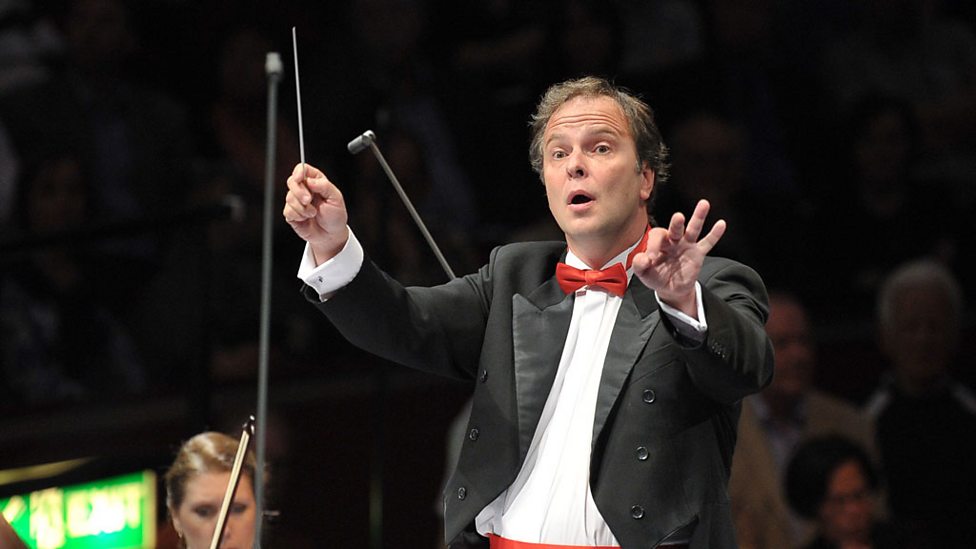Prom 61 : Renée Fleming sang Samuel Barber Knoxville: Summer of 1915 and Strauss with Sakari Oramo conducting the Royal Stockholm Philharmonic Orchestra (Konserthuset Stockholm), , in a programme that included Carl Nielsen's Symphony no 2 "The Four Temperaments" and Andrea Tarrodi's Liguria. Though the Nielsen was the highlight of the performance - done with great verve - BBC marketing played up the diva, whom most of the audience had come to hear. And rightly so, for Fleming is more than just a singer, she's a personality of such stature that any opportunity to hear her now should be cherished.
For me, the draw was Samuel Barber's Knoxville: Summer of 1915 op 24 (1948), an astonishing beautiful piece which I love dearly. There's nothing quite like it. It's a stream-of-consciousness reverie, heard through a haze of orchestration, evoking what it feels like to be young and protected, still within the embrace of loved ones. It is high summer,in Tennessee, inn the cool of the evening after a long, hot day. "...It has become that time of evening when people sit on their porches, rocking gently and talking gently and watching the street and the standing up into their sphere of possession of the trees, of birds' hung havens, hangars." Note the melody with its sense of slow, rhythmic movement, as if the whole world was a cradle, rocking gently in the breeze. Nothing much happens, and that's the beauty. In the quietude, even the tiniest detail is lovingly observed, like the streetcar in this distance, whose "iron whine rises on rising speed; still risen, faints; halts; the faint stinging bell; rises again, still fainter, fainting, lifting, lifts, faints foregone: forgotten."
Time itself seems to slow down and compress. The moment is so precious that the text lingers on images, trying to make them last as long as possible. Thus the sudden exaltations, with inventive non-words created spontaneously. "..They are not talking much, and the talk is quiet, of nothing in particular, of nothing at all. The stars are wide and alive, they seem each like a smile of great sweetness, and they seem very near.". Eventually even the images shrink to their most instinctive essence. The poet is an infant again, the very idea of Self erased,nestledbackin the womb. . "All my people have larger bodies than mine". But this nostalgia is doomed. The text takes on the semblance of prayer. Time cannot stand still. These people will die. It's that sense of fragility and loss that makes Barber's Knoxville 1915 such a special piece.
This also makes it more difficult to perform than might seem at first. The orchestration is deceptively simple - a sensual woodwind melody, gentle strings, soft rocking rhythms, which need to be created with restraint yet deep feeling. Received wisdom suggests that the singer should sound child-like, but I'm not so sure, for the protagonist is clearly someone who has grown old and learned what it means to lose what's closest and dearest. Somehow the singer has to evoke both perspectives at once : artfulness, but without artifice. There are many recordings, but very few get it right. Better, I think, simple sincerity. More than ten years ago, I heard a performance so self consciously over the top that I still shudder. (NOT Renée Fleming) So I'm so glad that Renée Fleming has at last commercially released a recording of Barber's Knoxville Summer of 1915 (with Oramo and the RSPO) because the gap in the discography needs her. Now, she's no ingénue and needs effort to project in the Royal Albert Hall. If that means sacrificing clarity of text,, for musical line, that's fine by me. She's still good value. She was on more familiar ground with the Transformation scene (Ich komme) from Richard Strauss Daphne.
The Prom began with Andrea Tarrodi's Liguria, a world premiere, an atmospheric piece evoking the moods of the landscape or seascape around Liguria. Rich, full bodied sounds, moving on multiple levels at once, as dense and teeming in detail as the ocean is. A central passage where clarinets, flutes and oboes dance together before lively percussion and pizzicato figures. In a third section, the pace and textures build up before detumesence in sparkling figures, lit by tolling bells. A very well written piece that deserves to be heard again in a programme that gives it more prominence.
















